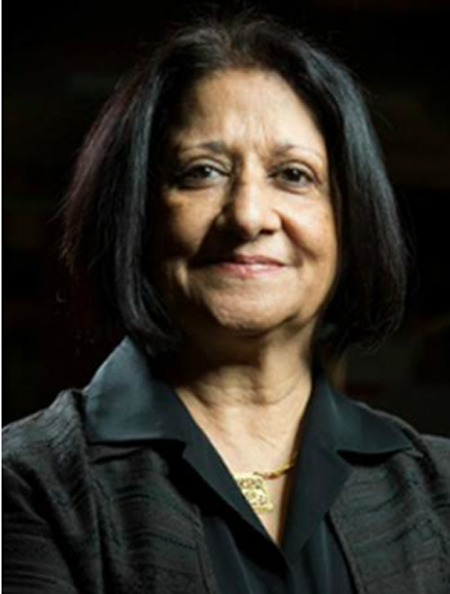Chemical Mixtures and Cancer
1:00 pm US Eastern Time
Slides & Resources
Slides
Chris Gennings: Analysis of Environmental Chemical Mixtures using Weighted Quantile Sum (WQS) Regression.
Shanaz Dairkee: The impact of mixed estrogenic chemicals on non-malignant cell function.
Nicole Niehoff: Airborne mammary carcinogens and breast cancer risk in the Sister Study.
Resources
A ternary mixture of common chemicals perturbs benign human breast epithelial cells more than the same chemicals do individually. Toxicol Sci. 165(133-144). doi 10.1093/toxsci/kfy126.
Exposure to the polyester PET precursor—terephthalic acid induces and perpetuates DNA damage-harboring non-malignant human breast Cells. Carcinogenesis. 36:1(168–176). doi 10.1093/carcin/bgu234.
Bisphenol-A-induced inactivation of the p53 axis underlying deregulation of proliferation kinetics, and cell death in non-malignant human breast epithelial cells. Carcinogenesis. 34:3(703–712). doi 10.1093/carcin/bgs379.
Analysis of environmental chemical mixtures and non-hodgkin lymphoma risk in the NCI-SEER NHL study. Environ Health Perspect. 123(10). doi 10.1289/ehp.1408630.
Niehoff, N,. Gammon, M., Keil, A., Nichols H., Engel L., Sandler D., and White A. (2019). Airborne mammary carcinogens and breast cancer risk in the sister study. Environ Int. 130(104897). doi: 10.1016/j.envint.2019.06.007.
In real world settings, exposure to individual environmental contaminants does not happen in isolation. Humans are exposed to many different chemical mixtures throughout their life. However, suspected environmental risk factors for cancer are most often evaluated one at a time. In response to this, scientists are developing new strategies to better understand cumulative exposures and chemical mixtures in relationship to cancer-related outcomes. Weighted quantile sum (WQS) regression is a biostatistical modeling strategy that determines an empirically-estimated weighted index of correlated components (e.g., environmental chemicals) associated with an outcome variable (e.g., risk of cancer), adjusted for covariates. Using a case study, Dr. Chris Gennings presented WQS regression in an analysis of a mixture of 27 correlated chemicals measured in house dust and risk of non-Hodgkin lymphoma.
Following this presentation, Dr. Shanaz Dairkee described the effects of environmentally relevant concentrations of single versus mixed xenoestrogens upon known cancer promoting cellular pathways within estrogen-responsive healthy human breast cells. Using this experimental model system, she presented data on the comparative response of non-malignant breast epithelium and breast cancer cell lines to illustrate the significance of incorporating appropriate target cells and endpoints in assays for chemical safety assessment.
To conclude, Dr. Nicole Niehoff presented results from her study on airborne mammary carcinogens and breast cancer risk. In this research, Dr. Niehoff examined 29 air toxics, with concentrations estimated from the 2005 National Air Toxics Assessment, in relation to breast cancer risk among 49,718 women in the prospective and nationwide Sister Study cohort. Classification trees were used to determine patterns and combinations of multiple pollutants that were more or less harmful for breast cancer compared to single pollutants.
Featured Speakers
 Shanaz H. Dairkee, PhD, is Principal Investigator and Senior Scientist, California Pacific Medical Center, San Francisco, California. She holds a doctorate in Human Genetics and Development from Columbia University, New York. Her laboratory has a longstanding track record in the development and research application of novel experimental models representing the wide spectrum of breast cancer histopathology and clinical heterogeneity. Dr. Dairkee’s current research employs population-derived healthy human breast cells as reliable translational surrogates towards the overall goal of cancer prevention. Key aspects of this work include the identification of molecular and functional effects of ubiquitous chemical exposure as a measure of quantifiable early cellular perturbations associated with breast carcinogenesis. Dr. Dairkee has served on several peer-review and scientific advisory groups, including the California Prop 65 Committee.
Shanaz H. Dairkee, PhD, is Principal Investigator and Senior Scientist, California Pacific Medical Center, San Francisco, California. She holds a doctorate in Human Genetics and Development from Columbia University, New York. Her laboratory has a longstanding track record in the development and research application of novel experimental models representing the wide spectrum of breast cancer histopathology and clinical heterogeneity. Dr. Dairkee’s current research employs population-derived healthy human breast cells as reliable translational surrogates towards the overall goal of cancer prevention. Key aspects of this work include the identification of molecular and functional effects of ubiquitous chemical exposure as a measure of quantifiable early cellular perturbations associated with breast carcinogenesis. Dr. Dairkee has served on several peer-review and scientific advisory groups, including the California Prop 65 Committee.
 Chris Gennings, PhD, is Director of the Division of Biostatistics and Research Professor in the Department of Environmental Medicine and Public Health at the Icahn School of Medicine at Mount Sinai. She also holds a secondary appointment as Research Professor in the Department of Population Health Science and Policy. Prior to joining Mount Sinai in 2014, Dr. Gennings held positions at the Virginia Commonwealth University, including as Professor in the Department of Biostatistics and Director for the Research Incubator for the Center for Clinical and Translational Research. An expert in mixtures statistics, Dr. Gennings has been actively engaged in the field for more than 30 years. Her research interests have focused on design and analysis methodologies for studies of chemical mixtures. Recent work includes novel methods related to regulatory guidelines for mixtures of chemicals. At Mount Sinai, Dr. Gennings serves as Director for the Statistical Services and Analysis Resource for the Human Health Exposure Analysis Resource (HHEAR), which provides multi-disciplinary expertise in statistics, epidemiology, and bioinformatics for collaboration within the broader environmental health research community. Dr. Gennings is also Director of the Biostatistics and Bioinformatics Core of the Mount Sinai Transdisciplinary Center on Early Environmental Exposures, where researchers are studying the health impacts of chemical, genetic, nutritional, and social exposures and the interactions among them. Dr. Gennings currently serves a member of the EPA Board of Scientific Counselors’ Chemical Safety for Sustainability Subcommittee.
Chris Gennings, PhD, is Director of the Division of Biostatistics and Research Professor in the Department of Environmental Medicine and Public Health at the Icahn School of Medicine at Mount Sinai. She also holds a secondary appointment as Research Professor in the Department of Population Health Science and Policy. Prior to joining Mount Sinai in 2014, Dr. Gennings held positions at the Virginia Commonwealth University, including as Professor in the Department of Biostatistics and Director for the Research Incubator for the Center for Clinical and Translational Research. An expert in mixtures statistics, Dr. Gennings has been actively engaged in the field for more than 30 years. Her research interests have focused on design and analysis methodologies for studies of chemical mixtures. Recent work includes novel methods related to regulatory guidelines for mixtures of chemicals. At Mount Sinai, Dr. Gennings serves as Director for the Statistical Services and Analysis Resource for the Human Health Exposure Analysis Resource (HHEAR), which provides multi-disciplinary expertise in statistics, epidemiology, and bioinformatics for collaboration within the broader environmental health research community. Dr. Gennings is also Director of the Biostatistics and Bioinformatics Core of the Mount Sinai Transdisciplinary Center on Early Environmental Exposures, where researchers are studying the health impacts of chemical, genetic, nutritional, and social exposures and the interactions among them. Dr. Gennings currently serves a member of the EPA Board of Scientific Counselors’ Chemical Safety for Sustainability Subcommittee.
 Nicole M. Niehoff, PhD, MSPH, is a postdoctoral fellow in the Environment and Cancer Epidemiology Group in the Epidemiology Branch at the National Institute of Environmental Health Sciences. She earned her PhD and MSPH in Epidemiology at the Gillings School of Global Public Health at the University of North Carolina at Chapel Hill. Dr. Niehoff conducts research on widespread environmental exposures such as air pollution and metals in relation to breast cancer incidence and is interested in the impact of mixtures of multiple pollutants that may be correlated or interact. Her current and past work has utilized resources from the Sister Study, the Komen Tissue Bank, and the Long Island Breast Cancer Study Project.
Nicole M. Niehoff, PhD, MSPH, is a postdoctoral fellow in the Environment and Cancer Epidemiology Group in the Epidemiology Branch at the National Institute of Environmental Health Sciences. She earned her PhD and MSPH in Epidemiology at the Gillings School of Global Public Health at the University of North Carolina at Chapel Hill. Dr. Niehoff conducts research on widespread environmental exposures such as air pollution and metals in relation to breast cancer incidence and is interested in the impact of mixtures of multiple pollutants that may be correlated or interact. Her current and past work has utilized resources from the Sister Study, the Komen Tissue Bank, and the Long Island Breast Cancer Study Project.
This webinar was moderated by Karen Wang, PhD, director of CHE. It lasted for 70 minutes and was recorded for our call and webinar archive.


